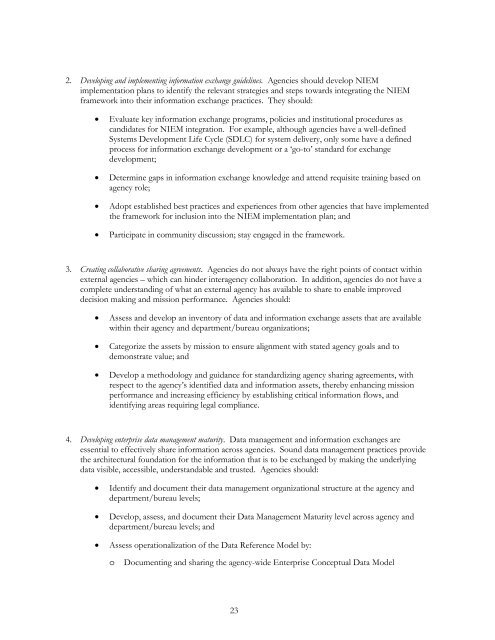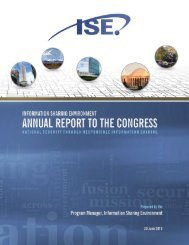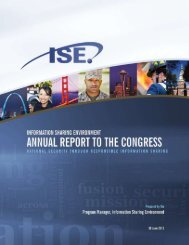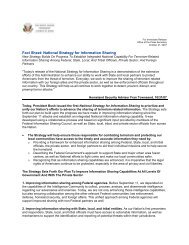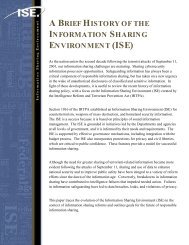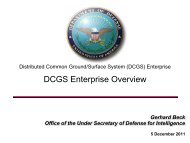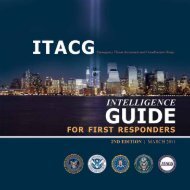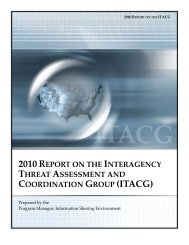agency information exchange functional standards evaluation
agency information exchange functional standards evaluation
agency information exchange functional standards evaluation
Create successful ePaper yourself
Turn your PDF publications into a flip-book with our unique Google optimized e-Paper software.
2. Developing and implementing <strong>information</strong> <strong>exchange</strong> guidelines. Agencies should develop NIEM<br />
implementation plans to identify the relevant strategies and steps towards integrating the NIEM<br />
framework into their <strong>information</strong> <strong>exchange</strong> practices. They should:<br />
• Evaluate key <strong>information</strong> <strong>exchange</strong> programs, policies and institutional procedures as<br />
candidates for NIEM integration. For example, although agencies have a well-defined<br />
Systems Development Life Cycle (SDLC) for system delivery, only some have a defined<br />
process for <strong>information</strong> <strong>exchange</strong> development or a ‘go-to’ standard for <strong>exchange</strong><br />
development;<br />
• Determine gaps in <strong>information</strong> <strong>exchange</strong> knowledge and attend requisite training based on<br />
<strong>agency</strong> role;<br />
• Adopt established best practices and experiences from other agencies that have implemented<br />
the framework for inclusion into the NIEM implementation plan; and<br />
• Participate in community discussion; stay engaged in the framework.<br />
3. Creating collaborative sharing agreements. Agencies do not always have the right points of contact within<br />
external agencies – which can hinder inter<strong>agency</strong> collaboration. In addition, agencies do not have a<br />
complete understanding of what an external <strong>agency</strong> has available to share to enable improved<br />
decision making and mission performance. Agencies should:<br />
• Assess and develop an inventory of data and <strong>information</strong> <strong>exchange</strong> assets that are available<br />
within their <strong>agency</strong> and department/bureau organizations;<br />
• Categorize the assets by mission to ensure alignment with stated <strong>agency</strong> goals and to<br />
demonstrate value; and<br />
• Develop a methodology and guidance for standardizing <strong>agency</strong> sharing agreements, with<br />
respect to the <strong>agency</strong>’s identified data and <strong>information</strong> assets, thereby enhancing mission<br />
performance and increasing efficiency by establishing critical <strong>information</strong> flows, and<br />
identifying areas requiring legal compliance.<br />
4. Developing enterprise data management maturity. Data management and <strong>information</strong> <strong>exchange</strong>s are<br />
essential to effectively share <strong>information</strong> across agencies. Sound data management practices provide<br />
the architectural foundation for the <strong>information</strong> that is to be <strong>exchange</strong>d by making the underlying<br />
data visible, accessible, understandable and trusted. Agencies should:<br />
• Identify and document their data management organizational structure at the <strong>agency</strong> and<br />
department/bureau levels;<br />
• Develop, assess, and document their Data Management Maturity level across <strong>agency</strong> and<br />
department/bureau levels; and<br />
• Assess operationalization of the Data Reference Model by:<br />
o<br />
Documenting and sharing the <strong>agency</strong>-wide Enterprise Conceptual Data Model<br />
23


